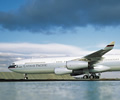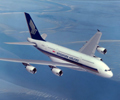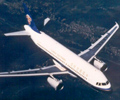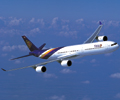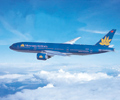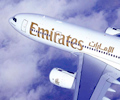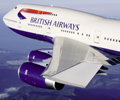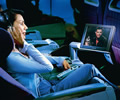|
BUSINESS TRAVEL So what's the point?Everything you wanted to know about airline frequent flyer programs and how to redeem your frequent flyer miles as airlines force up fares in return for rewards. Cathay Pacific switches to points (based on price) and drops miles and 'frequency'. by Libby Peacock updated by Staff Reporters SEE ALSO First Class Seat Survey | Business Class Seat Survey | Economy Class Seat Survey | Small Airlines Guide | Airbus vs Boeing | Business Class Seats Review | Round the world fares
ON 1 May 1981, American Airlines launched the world’s first mileage-based frequent flier program, AAdvantage. Initial rewards for frequent fliers included First Class upgrades from Economy for 12,000 miles, and 20 percent off a roundtrip ticket for 20,000 miles. Within a few days, United Airlines followed with its own loyalty programme, Mileage Plus. Later that same year, Delta and TWA introduced frequent flier programmes. The air miles dogfight had begun. Today, there are over 70 airline mileage FFP (Frequent Flyer Programmes) worldwide, and a complex web of airline alliances [see chart] and partnerships. AAdvantage boasts over 60 million members. And while many frequent fliers belong to four to six frequent flyer programs at the same time, this doesn’t necessarily maximise advantages. Today, step out of your home, and you're collecting frequent flier miles already for the most mundane chores, like filling petrol or buying groceries. Here's all you need to know about how airline frequent flyer programs stack up, collecting airline miles and redeeming those slippery points. Send us your Feedback / Letter to the Editor
The truth is that mileage accrual these days depends less on the frequency of your business and flights, and more on how much you spend – both on your ticket and other partner services linked to your programme. As one magazine puts it, “the biggest collectors of miles today are not frequent flyers but frequent buyers”. More than half of all miles are earned on the ground – on credit cards linked to airline programs, for instance. This is now official with Asian big-gun Cathay Pacific switching to points (rather than miles and sectors) on 15 April, 2016. In June 2014, United Airlines announced it would be leaping aboard the "pay-more" bandwagon - following in the footsteps of Delta and other US carriers. This comes into force in March 2015 at which point passengers will earn miles based not on distance flown but on money spent. Accountants with large pens and tiny vision call this a "revenue-based frequent flyer program". The arrangement favours those who spend a lot on short distances but not those who actually fly frequently yet watch their bottom line, as sensible travellers must. Earnings are based on the membership level: a general member gets five miles per dollar spent; a silver premier member earns seven miles per dollar with gold earning eight miles and platinum earning nine. Members will be able to use miles to upgrade seats and play with other less appealing goodies. They will be able to earn miles on partner airlines (through Star Alliance) in many cases (not on United codeshare flights) but this will not go towards their United Premier Qualifying Dollars. If you are left scratching your head, you are not the only one. It’s a mega-bucks industry with all sorts climbing aboard the bandwagon. Says the Travel HackingCartel (travelhacking.org), “Earn hundreds of thousands of frequent flyer miles… without getting on a plane.” Its goal is to “democratize free travel.” To help make sense of it all, here is our guide to airline frequent flyer programmes (FFPs) and global combines. Air milesFirst thing to remember is not every flight will earn you miles. That discounted economy ticket may be easy on the pocket, but the low fare may gather no miles – or a vastly reduced percentage. Qatar’s Privilege Club allows those with discounted Economy tickets to earn from 25 -75 percent of the mileage only while Malaysia Airlines’ Enrich offers 70 percent of miles for certain discounted Economy fares and 150 percent of miles for discounted Business Class fares. Group tickets may not bring the miles you expect (with Korean Air’s SKYPASS, they only earn 80 percent of normal Economy miles). With Flying Returns, the Air India FFP (now including the merged Indian Airlines), promotional fares earn 50 percent of normal International Economy mileage points, 25% for domestic. Some programmes are more generous than others. Virgin Atlantic’s Flying Club allows members to earn miles on all flights, including the airline’s lowest Economy fares. It also introduced mileage bonuses for Silver and Gold members. The only flights not qualifying for miles are ones bought with redemption awards in the first place. Fair enough. Royal Brunei’s FFP, Royal Skies, has two elite categories above basic: Silver and Gold. It is one of few frequent flier programs allowing members 100 percent of miles even for discounted Economy flights. Royal Skies frequent flyers get 125 percent of miles for discounted Business fares. Full-fare Business earns 150 percent. Qantas’s Frequent Flyer has a minimum points guarantee: members earn at least 1,000 points on Economy, and at least 1,250 on Business or First. Singapore Airlines’ KrisFlyer, offers 100 percent miles for full fare Economy – with lower fare booking classes N&Q delivering 50 percent accrual, and T&V offering a more meagre 10 percent. {Giving in to frequent flyer ire at the severity of point restrictions, CX announced from 8 December 2017, bigger giveaways for short and long haul flights... China Airlines Dynasty Flyer members don’t earn mileage for tickets sold at discounts of 50 percent or more. Free, infant, barter, charter, excess baggage, airline and travel industry discount tickets don’t earn miles either. Always check with the airline or travel agent whether your flight will accrue miles. There is an important distinction between air miles or points, and “tier” or “status” miles or points. Most FFPs work along similar principles. Air miles or points (earned by flying or buying services from FFP partners) make up the “currency” you need to redeem tickets. Tier or status miles, on the other hand, collected through actually flying, allow you to progress to higher membership levels within your programme. The higher your level, the more benefits you get (typical perks include extra baggage allowance, dedicated check-in, the use of airport lounges, priority waiting lists, priority for upgrades and so on). Several frequent flyer programs have three elite tiers above basic, although some, such as Thai Airways International, have managed quite well thus far with two. THAI Airways International offers accrual at 100, 110, 125 and 150 percent moving up from economy, to premium economy, to business, to first class. As an Asian biggie, the route network is well set to offer passengers a comprehensive set of destinations and onward connections via Bangkok. In mid-2011 THAI spiced up things with the launch of its premium by-invitation Platinum tier, a cut above gold. Passengers need to rack up at least 50,000 miles or 40 international flights per annum to be eligible for all the attendant privileges – non-expiring points (as long as Platinum membership is retained), extra baggage, no extra fees for redemptions, and the promise of separate check-in and fast-track immigration at Bangkok’s Suvarnabhumi Airport. Members of Cathay Pacific’s FFP, Marco Polo Club, once earned “Club Miles” that were used to determine the membership tier (20 club sectors or 30,000 miles for Silver, 40 sectors or 60,000 miles for Gold and 80 sectors or 120,000 miles for Diamond). While discounted economy fares on CX did not offer miles or points (or just 25 percent of the mileage) and they did not earn “sectors” either, forcing travellers to spend more rather than simply flying more. In September 2015 the airline announced a sea change. The new Cathay Pacific Marco Polo frequent flyer program is based on ‘points’ depending on flight zone (ultra short haul to ultra long haul) from 15 April, 2016. Some clever gerrymandering in the make-up of these zones shakes things up considerably for genuine ‘frequent flyers’. It will be harder for many to achieve a starting Silver status with its seemingly distant 300 point threshold. A Hongkong-Delhi fare for example will earn five to 15 points one way depending on ticket class, the top tier being economy Y, B, H, K. And business class on the same route earns up to 25 points one way. A one-way economy ticket to Manila also earns 15 points as both Delhi and Manila are, surprisingly, clubbed in the ‘short’ haul category. HK-London is a ‘long’ haul with up to 45 points to be had on full economy on CX (a partner airline like British Airways earns up to 35 Marco Polo Club points) and Hongkong-New York brings in up to 50 points in economy as an ‘ultra long’ haul flight. A ‘Green’ basic card changed to 100 points with one business lounge pass available after touching 200 points. Giving in to frequent flyer ire at these severe restrictions, Cathay Pacific announced in early November 2017 that from 8 December, 2017, "Our Green members can now maintain and renew their status with just 20 club points within a membership year, rather than the 100 club points that used to be required." Economy points on offer were upped by 15-20 points for short haul and 55-60 for long haul. Business class flights upped points earned - on short flights only - by between 20-35 points. Silver (300 points) offers a single lounge entry, priority wait-listing and advance seat reservation with 450 points offering lounge access for two. Gold status starts at 600 points – with lounge access for two; 1,000 points offers four bookable upgrades and guaranteed economy class seating – while Diamond status commences at 1,200 points. Crossing 1,800 points earns one complimentary Gold card membership for a companion. Diamond also comes with a guarantee of business class seats on any Cathay Pacific (CX) flight. These changes affect points accrual on Cathay feeder carrier Cathay Dragon (the rebranded Dragonair, January 2016) as well. Also in Hong Kong, budget airline Hong Kong Express launched its Fortune Wings Club frequent flyer program (with partner Hainan Airlines) second quarter 2016. Other point earning partners include some hotels, credit cards and car rental companies. A Select card comes at 5,000 points earned in 12 months, followed by Silver (30,000), Gold (50,000), and Platinum (100,000). Depending on your status, privileges could include access to Club Bauhinia at HK Airport, priority boarding, and in-flight discounts on duty-free shopping. Silver, Gold and Platinum card members can also earn an extra 25 or 50 percent bonus travelling on Hong Kong Airlines, Hainan Airlines, Tianjin Airlines, and a few other China carriers. All Marco Polo club members are also enrolled in the Asia Miles program, and it is Asia Miles that can be redeemed for flights or other awards. Here is where it becomes potentially confusing: Marco Polo members can also earn Club Miles when flying with other oneworld partner airlines, while Asia Miles can also be earned when flying with Cathay’s 20 Asia Miles airline partners. Similarly, Qantas Frequent Flyer “status” credits are separate from frequent flyer points. The number of status credits you earn is determined by cabin class and distance flown – the more credits you earn, the sooner you can achieve a higher status. Qantas Frequent Flyer, with Bronze (entry level), Silver, Gold and Platinum cards, is the largest FFP in the Australian region, with over seven million members. Partner airlines include oneworld alliance members such as Cathay Pacific, Japan Airlines, American Airlines and British Airways. While air miles remain valid for a few years, tier miles are generally re-set to zero annually. A few airlines are slightly more lenient. Vietnam Airways Golden Lotus Plus Silver card members must accumulate at least 30,000 qualifying points (or take 30 eligible flights) in a year to move to the Gold tier – but the points remain valid for two years after 31 December of the year in which they were earned. Korean Air SKYPASS members who have flown more than 50,000 miles on Korean Air (or 30,000 miles on Korean and 20,000 on another SKYPASS partner) are eligible for “Morning Calm Club” qualification, which brings privileges such as additional 10kg baggage allowance and exclusive check-in. The next tier is “Morning Calm Premium Club”, bringing with it an additional 20kg baggage allowance (and one extra baggage piece), and the privilege of checking in at Korean Air First Class counters. As for those high fliers who manage to accumulate a million miles, life membership to the “Million Miler Club” beckons. Frequent fliers on Korea’s Asiana Airlines can sign up to Asiana Club, which has five levels of membership – silver, gold, diamond, diamond plus and platinum. Mileage is accrued by flying Asiana Airlines or any other Star Alliance member airline. Once members reach gold status, they also reach ‘elite membership status’, though there are certain criteria to retain this status (for example, a gold member needs to accrue 20,000 miles or 30 trips in two years from ‘Reference Day’, which is the day they qualified for gold membership). Elite members get a variety of benefits from priority check-in and Asiana Airlines lounge access to bonus miles. Redemption opportunities come in the form of free tickets and upgrades. Magic Miles is Asiana’s frequent flyer program specifically for kids under 12. Members of EVA Air’s Evergreen Club earn mileage by flying on EVA and its partner airlines (All Nippon Airways) and through participating hotels, car rental agencies and credit card companies. Evergreen Club has four tiers of membership – green, silver, gold and diamond. An upgrade from green to silver requires a member to earn 30,000 miles or take six international flights on EVA Air within 12 months. Mileage points are retained for three years. Expired mileage is automatically cancelled at the end of the calendar year without notice. Rewards come in the form of upgrades and free tickets – these can be booked through an EVA Air reservation office or through an Evergreen Club online account. As you move up frequent flyer tiers, it becomes easier to earn miles. A higher membership level translates into more award miles for members of Flying Blue, the frequent flyer programme of major European airlines Air France and KLM, which has also been adopted by Air Europa, Air Calin, Kenya Airways and Tarom, plus is compatible with SkyTeam airlines. (The programme has about 100 partners and four membership levels, Ivory (basic), Silver, Gold and Platinum, depending on the number of “Level Miles” earned in a year.) Silver members get 50 percent more award miles for flights than Ivory; Gold members get 75 percent more and Platinum 100 percent more. Along with other typical high-tier benefits, the extra baggage allowance doesn’t hurt either: 5kg more for Silver, 10kg more for Gold and 20kg more for Platinum. Qantas Frequent Flyer Gold and Platinum members are privy to a range of benefits and free membership of the Qantas Club programme. They also earn Qantas Frequent Flyer points faster (Silver members get a 25 percent “status bonus”, Gold 50 percent and Platinum 100 percent, on top of base miles earned). Garuda Indonesia offers three tiers above basic Blue: Silver, Gold and Platinum, plus has a junior scheme for children aged two to 11 years old who earn 75 percent of adult mileage when they fly. Extra baggage allowance is a handy perk. Malaysia Airlines Enrich Silver members (the tier above basic Blue) enjoy an extra 5kg, while Gold members (the next tier up) are eligible for 50 percent extra. Platinum members get a whopping 100 percent extra – and their miles never expire. Qatar Airways Privilege Club Burgundy cardholders are allowed an extra 10kg of baggage, Silver 15kg and Gold 20kg.
{Free miles do have a shelf life, usually three years. After that period some airlines will let you pay to keep them if you really must be a magpie FFP membership is generally free (although you may have to pay for services offered further down the line). But the miles you earn aren’t yours for keeps. They often have a three-year shelf life, after which they expire (although some programmes allow passengers to extend validity by paying). Qatar Airlines Privilege Club Qmiles are valid for three years (no Qmiles expiry for Platinum members), and Gulf Air Frequent Flyer Programme miles for three years too, down from an exceptionally generous 10 years. Flying Blue award miles don’t expire – as long as you take at least one flight with a SkyTeam airline partner in 20 months. Malaysia Airlines Enrich miles remain valid for three years. So do Krisflyer miles – Krisflyer members may extend their miles for 12 months (from end of year) for a nominal fee. Northwest Airlines was officially taken over by Delta in January 2010 and its website is gone. If you’re a Northwest Neanderthal still holding on to the good old days, talk with Delta about the merger updates and mileage transfers and accumulation. Virgin Atlantic Flying Club miles do not expire as long as you take part on at least one “earning or spending activity” every three years. With the United Airlines Mileage Plus program you can reinstate expired miles (within the last 18 months) with a fee starting at US$50 for 25,000 miles). The FFP mileage currency used by Air New Zealand is Airpoints Dollars and they can be used just like cash to buy seats on the airline, and are valid for four to five years and there is no Airpoints Dollars expiry for Elite and Gold members). A one-way flight between Asia and New Zealand on a discounted Economy fare earns 65 Airpoints Dollars, a full Economy fare earns 80 Airpoints Dollars, Premium Economy earns 100 Airpoints Dollars and Business Premier, 210. Every year, on a member’s anniversary of joining, all Airpoints Dollars earned more than four years earlier expire (with the exception of Gold and Gold Elite status member miles, which don’t expire). Every time you use Airpoints Dollars, the oldest are used first, keeping the Airpoints Dollars due to expire at a minimum. Several FFPs welcome young travellers from the age of two (otherwise enrolment age is normally 12). Magic Miles is the Asiana progamme for children under 12 years old. They accrue 75 percent of miles when they travel and automatically become an Asiana Club Member on their twelfth birthday. Children don’t always earn miles at the same rate as adults. Toddlers on Korean Air’s SKYPASS programme earn 75 percent of adult miles. However, child redemption award tickets tend to “cost” the same number of miles as adult tickets. A welcome exception is Air India’s Flying Returns, requiring only half the mileage points for award tickets for children under 12. Lufthansa’s Miles & More requires only 75 percent of the miles normally redeemed for adult flights awards for children from two to 11. Lufthansa, Austrian Airlines, Cathay Pacific, Air France and American Airlines (among others) have signed a reciprocal frequent flier agreement with India's fast-growing Jet Airways. The Jet Airways FFP, JetPrivilege, operates on a five-tier basis. JetPrivilege Blue is the entry level, followed by JetPrivilege Blue Plus. The highest tiers are Silver, Gold and Platinum. The scheme uses Tier Points and Tier JPMiles. One international or domestic Economy flight on Jet Airways, Jet Airways Konnect or JetLite will earn you one Tier Point whereas one international flight in First class will load you up with five points. Flying economy will earn you 100 percent of your JPMiles, or receive 150 percent in Premiere (Business) and 200 in First. A six-month fast-track option enables you to jump to a higher tier more quickly. If you have 5,000 Tier JPMiles you can bag yourself a free one-way ticket from Mumbai to Goa, or for 12,000, fly from Delhi to Kolkata. Jet Airways and United Airlines work together to enable members of both its FFPs to earn and redeem miles on both Jet and United flights. Jet Airways also has frequent flyer partnerships with Emirates and Turkish Airlines. Flamboyant Indian Kingfisher Airlines (with its King Club FFP) had its license revoked and is not airborne. The TATA-SIA Vistara (www.airvistara.com) launched 9 January, 2015, as a full service premium airline for India. The carrier offers a frequent flyer programme called Club Vistara. Most FFPs don’t allow spouses or family members to pool miles. But a few programmes, such as those of Japan Airlines (JAL) and Korean Air, are more generous. JAL Mileage Bank’s JAL Family Club is a program for members living outside Japan and their families, which – for an annual fee of US$30 – allows family members to combine miles to redeem awards. In April 2007, Japan Airlines, the biggest carrier in the Asia-Pacific region, joined the oneworld alliance. Up until this point, JAL was the largest airline in the world not aligned to a multilateral global alliance. Members of the JAL Mileage Bank can earn and redeem mileage awards on all other oneworld carriers, and frequent flyer programme members of the other oneworld airlines can earn and redeem awards on JAL. Under Korean Air’s SKYPASS Family Plan, enrolled family members (including parents, spouses, brothers and sisters and even sons- and daughters-in-law) may also pool awards. Korean Air also requires only 90 percent of the standard award redemption mileage when family members with the same itinerary claim two or more round-trip award tickets. (This doesn’t apply for one-way and infant tickets.) The Qantas Frequent Flyer program doesn’t offer a family plan, but it does give members the flexibility to transfer a portion of their points (5,000 to 100,000) to one family member, who must also be a member, once a year. This is helpful when couples have enough points between them, but not individually, for an award flight. Flying Returns, the joint frequent flyer program of Indian Airlines and Air India, also allows members to pool points with spouses (provided the spouse is also enrolled). Vietnam Airways’ Golden Lotus Plus Gold card members may nominate and transfer awards to up to seven people registered on their redemption group forms. (The programme has Silver, Titanium and Gold tiers above basic; to obtain Silver status, members must take one eligible flight with Vietnam Airlines within a year of becoming a member.) You’ll need to concentrate in order to fully grasp the rather complex Bangkok Airways FlyBonus scheme. Flights are classified into four categories, according to distance. Depending on the category of the flight, an economy one-way flight can earn between ten points (domestic) and 25 points (international “category three” flight). When 100 points are accrued, a FlyBonus member can get a free economy-class one-way ticket to a domestic destination (150 points for an economy class one-way ticket to an international destination). To progress to the programme's premier tier, 250 points a year are needed. Fast-expanding Middle-Eastern airline Qatar Airways carried 14 million passengers in 2010. The airline describes its Qatar Airways Privilege Club as “one of the most generous frequent flyer programmes” in the world. Each flight with Qatar Airways earns Qpoints according to the service class you fly in. The more Qpoints earned, the higher the membership level. There are three tiers: to reach Burgundy, you need 50 Qpoints, for Silver you need 150 Qpoints, and for Gold you need 300 Qpoints. A fare on an Economy class flight within Region One (say, between Doha and Dubai) will earn you eight Qpoints, while a Region Two flight will accrue ten Qpoints. As well as earning Qpoints for every flight, Qmiles are also accumulated. Full-fare Economy flights earn 100 percent of miles while Business earns 200 percent and First 300 percent. Qmiles can be redeemed for awards with Qatar Airways, as well as its partners. Qmiles are valid for three years (except for Platinum members). Once you have reached Burgundy status, you can enroll up to nine family members, with Qmiles earned by members credited to your account (children between two and 11 earn 50 percent of miles; those over 12 earn 100 percent). The Scandinavian Airlines Eurobonus frequent flyer programme has two tiers above basic: Silver and Gold. Both Silver (after 1 April, 2014) and Gold members get 25 percent more on flights operated by SAS. Membership level is determined by the number of Basic points members earn on Scandinavian and other Star Alliance member airlines during a specific period, but – and this is where things get more complicated – Gold membership levels depend on the region you find yourself in (70,000 Basic points for Asia and the US, 55,000 for Denmark and Finland, and 45,000 for Norway). The most discounted Economy earns only 25 percent of points. Flexible Economy earns 100, Economy Extra (premium economy) 150 and Business 200 percent. But, on the upside, tickets can be redeemed up to departure for bonus flights on SAS and other Star Alliance member airlines to destinations where e-tickets are available. Members are allowed to let family or friends use their points. A number of FFPs have different programmes for different parts of the world. Flying Returns had a range of four: India, UK-US-Canada, the Gulf and Far East and Southeast Asia. This has now disappeared. Flying Returns Membership is valid for three years, and all reward miles must be redeemed in that time. Members can redeem flight awards on Singapore Airlines and Lufthansa; and India-based members may also purchase miles at the rate of Rs1 per mile on falling short for redemption. It's not just legacy carriers that churn out attractive FFP programmes. Discount carriers can do whatever the Big Boys do, and in style. AirAsia may fly budget seats but it has a BIG frequent flyer program, literally. Called BIG Loyalty Programme (www.airasiabig.com). Its website has a point calculator with a ticket and add-ons reckoner as well as awards partners and affiliates. Redemption is handled online to to over 100 destinations served by AirAsia and there is an option to combine cash redemptions with points. Signed up BIG Shots get priority access to AirAsia sales too. Redeeming airline milesYou have the miles. Now you need to book your flight. But with millions of frequent flier air miles competing for a limited number of available redemption seats, this can be tricky. Redemption tickets occupy limited quotas on various flights and busy sectors can be hard to get on to. Flying Blue allows members to book flight award tickets on SkyTeam members online (www.airfrance.com or www.klm.com, or by contacting the Customer Service Centre) until 24 hours before departure (for other airline partners, at least two weeks are needed). Thai Airways International’s Royal Orchid Plus, with Basic, Silver and Gold cards, makes it relatively easy for members on all tiers to redeem miles: they simply have to contact a THAI reservations office worldwide three days in advance, and if they go through the Royal Orchid Plus online service, award tickets can be issued instantly. Redemption tickets on THAI may be somewhat easier to come by than on some of its Asian airline competitors. Gulf Air Frequent Flyer Programme requires Blue cardholders to redeem their miles for a free ticket 14 days before departure, Silver four days before and Gold till any point that flights are open for sale in the system if booking through a Gulf Air office or call centre. No deadline for booking online for the three tiers. While Qantas Frequent Flyer points can technically be redeemed up to 24 hours before departure by calling Qantas reservations, the airline recommends booking well in advance (as early as 353 days in advance), as award seats are limited and may not always be available. Members can book award flights at www.qantas.com/frequentflyer (where they can book up to two hours before departure for domestic flights or up to four hours before departure for international flights. Some locations require earlier advance booking). Royal Brunei’s Royal Skies requires award flight redemption requests to be made at least fourteen working days before departure. Members have to submit redemption forms to a Royal Brunei office, Royal Skies service centre or online. KrisFlyer members can redeem awards online through the Singapore Airlines reservations offices or Krisflyer service centres. To redeem miles for free tickets with Qatar Airlines Privilege Club, Burgundy members need to act at least seven working days before departure, Silver members four and Gold / Platinum members three (a rush fee of US$25 applies if redeemed within the day limit for each tier or $50 for same day redemption). Flying Returns members must generally allow about 15 days for awards to be issued. The other major obstacle is blackout periods and the fact that most airlines limit the number of redemption seats available on flights. Thai Airways International states that award travel is subject to “capacity control”. There are no blackout periods. Malaysia Airlines says it does not have fixed blackout dates for redemption tickets – as long as there are seats available. {Another major obstacle is the blackout periods and the limited seats available for redemption especially at holiday times when demand peaks Virgin Atlantic’s regional partner airline Virgin Blue, which has its own frequent flyer programme, Velocity, prides itself on not limiting the number of redemption seats on flights. If there’s a seat available on a flight, Velocity members can redeem miles to have it. The same goes for Pacific Blue and Polynesian Blue. Virgin Blue also does not impose blackout periods (not even during high-traffic periods such as Christmas), but it does advise to plan ahead, reserve seats early, and try to book mid-week fares. Velocity points do not expire while members remain “active”. Under the Korean Air SKYPASS programme, more miles are needed to redeem award tickets and upgrades during peak seasons than quiet periods. Lufthansa’s frequent flyer program Miles & More is also the programme of the Austrian Airlines Group, Swiss International Airlines, Croatia Airlines and LOT Polish Airlines, and has around 19 million members. Members progress to the next membership tier by collecting the required number of status miles – 35,000 status miles in a year for Frequent Traveller status, 130,000 (in Germany and Austria; 100,000 for the rest of the world) to reach Senator level, 600,000 to become an HON Circle member. As we said, you don’t have to travel to earn mileage. It’s easy to clock up miles on the ground. Non-airline frequent flyer partners typically include finance companies, hotels and travel businesses, telephone and car hire companies. Qantas Frequent Flyer partners include hotels, car rental companies, charge cards, a phone card company, insurance company and even a wine club. Marco Polo Club members have access to about 400 Asia Miles partners in nine “lifestyle” categories – from finance, hotels and telecoms to dining, retail and the health and beauty sector, while Malaysia Airlines Enrich members earn miles not only when flying MAS or its airline partners, but also when staying at participating hotel properties, using credit cards and driving rented cars from car rental partners. American Airlines AAdvantage members can earn miles with anything from beach holidays to golf outings and spa services. Japan Airlines Mileage Bank members can earn miles through certain Internet providers. The largest frequent flyer programme in China, the China Southern Airlines Sky Pearl Club only accepts members over the age of 12, but already has more than four million members, with over 500 new members joining each day. Travel awards can be earned by flying with China Southern Airlines or its SkyTeam partners (including Korean Air, Air France, KLM, and Alitalia), staying at participating hotels and so on. Moreover, Sky Pearl Club members can 'earn and burn' mileage on partners, Air China, Hainan Airlines and Czech Airlines. As with most FFPs, the higher the class of service you fly, the more miles (or, in this case, kilometres) you earn. Gold and Silver Sky Pearl Club card members receive special elite bonus mileage on eligible flights. Sky Pearl Gold Card members earn an extra 30 percent and Sky Pearl Silver Card members an extra 15 percent. Sky Pearl Club members need 80,000 Elite qualifying miles or 40 elite Qualifying Segments to upgrade to Gold Card status. For Silver Card membership, 40,000 Elite miles or 20 Elite qualifying segments are needed. First or Business Class travellers get more benefits: flying First or Business Class once is counted as two Elite Qualifying Segments (EQS) while one flight in Economy is calculated as one. Fortune Wings Club is the FFP for Hong Kong Airlines and no-frills Hong Kong Express Airways, as well as Hainan Airlines, Grand China Air, Tianjin Airlines, Lucky Air and Air Berlin. Fortune Wings Club has three tiers of membership – regular, silver and gold. Silver requires 30,000 miles or 20 flights. Gold requires 50,000 miles or 40 flights. Emirates Skywards, with Blue, Silver and Gold tiers, is the FFP by Emirates. As is generally the case, tier miles are accumulated within one calendar year. Economy flights earn one Skywards Mile per mile flown (100 percent), Business flights 175 percent and First Class 250 percent. Silver members get 25 percent bonus miles, Gold members get 50 percent and Platinum members get 75 percent. Members can redeem awards online at www.skywards.com, or through Skywards service centres or the airlines’ reservations offices. SriLankan Airlines was part of the Skywards frequent flier program, but recently launched its own FFP, FlySmiLes, with three membership tiers, Normal, Silver and Gold. Every time you fly with SriLankan Airlines, you accumulate FlySmiLes at the rate of one mile per mile flown. FlySmiLes Gold members get a 15 percent bonus for every mile they fly with SriLankan. A Platinum member’s bonus increases to 25 percent. Miles can be redeemed for full-ticket purchases or partial payments. FlySmiLes members who reach Silver or Gold level automatically get an extra12kg baggage allowance. If you travel frequently for business, this is a good option. As well as other benefits, any FlySmiles member can opt to enrol in the Baggage bonus programme. Baggage Plus members will get an additional 15kg allowance, while Baggage Premier members get an extra 25kg. All Nippon Mileage Club does give members up to four business days before boarding their flight to book redemption tickets – but there are blackout periods. The airline also warns that award seats are “subject to availability”. Equal numbers of redemption miles are required for adult and child seats. To qualify for Bronze tier, members need 30,000 ANA Premium Points, for Platinum they need 50,000 Premium Points, and to reach the highest level, ANA Diamond Service, 100,000 Premium points. China Airlines’ Dynasty Flyer has a special Junior card for kids aged 12 and under, and Dynasty, Gold, Emerald and Paragon tiers. Members of Gold, Emerald and Paragon tiers get an extra bonus of 2,000 miles as a birthday gift if they fly on China Airlines or Mandarin Airlines in their birthday month. Other bonuses include an extra 1,500 miles credited when members use a Dynasty Package to travel to the United States, Canada, Europe or Australia, or 500 miles for Dynasty Packages to all other destinations. Finally, fine print, blackout periods and limited seats may all make FFP membership seem more hassle than it’s worth, but if you persist with one programme, make use of partner services on the ground and plan ahead, that elusive “free ticket” may yet be yours. Failing that, early check-in, lounge access and other FFP higher-tier benefits do make travel just that tiny bit more comfortable. Who’s where on global alliances?
NOTE: Telephone and fax numbers, e-mails, website addresses, rates and other details may change or get dated. Please check with your dealer/agent/service-provider or directly with the parties concerned. SmartTravel Asia accepts no responsibility for any inadvertent inaccuracies in this article. Links to websites are provided for the viewer's convenience. SmartTravel Asia accepts no responsibility for content on linked websites or any viruses or malicious programs that may reside therein. Linked website content is neither vetted nor endorsed by SmartTravelAsia. Please read our Terms & Conditions. | ||||||||||||||||||||||||||||||||||||||||||||||||||||||||||||||||||||||||||||||||||||||||||||||||||||||||||||||||||||||||||||||||||||||||||||||||||||||||||||||||||||||||||||||||||||||||||||||||||||||||||||||||||||||||||||||||||||||||||||||||||||||||||||||||||||||||||||||||||||||||||||||||||||||||||||||||||||||||||||||||||||||||||||||||||||||



